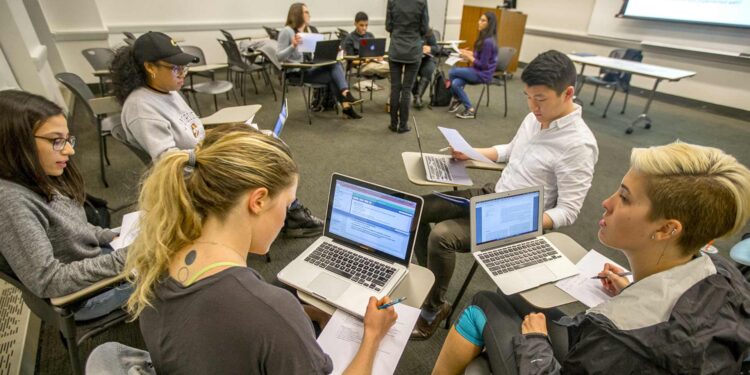The landscape of higher education is undergoing a transformative shift, largely driven by advancements in technology. From virtual classrooms to AI-powered tutors, the way students learn and interact with educational content is evolving at an unprecedented pace. These technological innovations are not only making education more accessible but also more personalized, flexible, and efficient. In this article, we explore the ways technology is shaping the future of higher education and how students are leveraging these tools, even considering options like pay someone to take my online class, to succeed in their studies.
The Rise of Online Learning Platforms
One of the most visible impacts of technology on higher education is the proliferation of online learning platforms. Universities and colleges now offer a wide array of courses online, making it possible for students from any location to access world-class education. Platforms like Coursera, edX, and Udemy provide courses that cover everything from computer science to liberal arts, giving students unprecedented flexibility in choosing how and what they learn.
Online learning has also introduced new challenges. While the convenience is undeniable, some students struggle with self-discipline, time management, and staying motivated without the structure of a traditional classroom. This has led to the rise of services where students can pay someone to take my online class, ensuring that deadlines are met and grades remain competitive. While controversial, this option highlights the evolving ways technology intersects with student needs and academic pressures.
Personalized Learning Through AI
Artificial intelligence (AI) is revolutionizing higher education by enabling personalized learning experiences. AI algorithms can analyze a student’s learning patterns, strengths, and weaknesses to deliver customized educational content. For example, adaptive learning platforms can provide additional exercises in areas where a student is struggling or accelerate learning in subjects they excel at.
These AI-driven insights allow educators to focus more on one-on-one interaction and mentoring rather than repetitive teaching tasks. Moreover, students benefit from a learning experience that adjusts in real time to their needs. For some, this enhanced personalization makes it easier to succeed without seeking external help, while others may still rely on services like pay someone to take my online class to manage complex coursework alongside work or personal commitments.
Virtual and Augmented Reality in Higher Education
Virtual reality (VR) and augmented reality (AR) are no longer confined to gaming—they are becoming essential tools in higher education. VR can simulate immersive learning environments, allowing students to conduct virtual lab experiments, explore historical sites, or even practice complex surgeries. AR overlays digital information onto real-world objects, helping students visualize complex concepts in subjects like engineering, medicine, and architecture.
These technologies provide experiential learning opportunities that were previously impossible outside of expensive physical labs or field trips. They not only enhance comprehension but also make learning more engaging and memorable. As higher education increasingly integrates VR and AR, students will have a more interactive and effective learning experience, reducing the dependency on rote memorization or traditional teaching methods.
The Role of Learning Analytics
Learning analytics is another technology reshaping higher education. By collecting and analyzing data on student engagement, performance, and behavior, institutions can make data-driven decisions to improve teaching and learning outcomes. For instance, analytics can help identify students at risk of falling behind, allowing early interventions to prevent failure.
This technology also supports students in making informed decisions about their own learning habits. They can track their progress, compare performance against benchmarks, and adjust study strategies accordingly. However, for students struggling to balance multiple courses or responsibilities, the temptation to pay someone to take my online class remains an option, demonstrating the dual-edged nature of technological convenience.
Collaboration and Communication Tools
Technology has dramatically enhanced collaboration and communication in higher education. Tools like Zoom, Microsoft Teams, and Slack enable students and instructors to interact in real time, regardless of physical location. Cloud-based platforms allow for seamless sharing of documents, collaborative projects, and feedback.
These tools are especially crucial for group projects and research, where coordination among multiple team members is required. Technology ensures that students can work together efficiently, even across different time zones. In some cases, students who find managing group dynamics or deadlines challenging may still seek services to pay someone to take my online class, showing that technology supports both independent and assisted learning.
Challenges and Ethical Considerations
While technology offers numerous benefits, it also presents challenges and ethical concerns. Issues such as data privacy, cybersecurity, and academic integrity are increasingly important. With the rise of online courses, there is a higher risk of cheating, plagiarism, and misuse of services like paying someone to take my online class. Educational institutions must implement policies and tools to maintain academic honesty while still embracing technological innovation.
Moreover, not all students have equal access to advanced technologies. Digital divides, driven by socioeconomic factors, can limit the effectiveness of tech-driven learning solutions. Ensuring equitable access to technology is crucial for the future of higher education.
Preparing Students for a Tech-Driven World
Beyond academic performance, technology in higher education is preparing students for the digital workforce. Skills in AI, data analytics, virtual collaboration, and digital communication are increasingly essential in the modern workplace. By integrating these tools into learning environments, higher education institutions equip students with both the knowledge and the technological fluency they need for future careers.
In addition, the option to pay someone to take my online class, while controversial, highlights a growing recognition of diverse student needs. Some students juggle work, family, and personal responsibilities alongside their education, and technology, combined with supportive services, allows them to continue learning without sacrificing quality or opportunities.
Conclusion
Technology is undeniably reshaping the future of higher education. From online learning platforms and AI-powered personalized learning to VR, AR, and learning analytics, students now have more tools than ever to succeed academically. While these innovations make education more flexible and accessible, they also introduce new challenges, such as maintaining academic integrity and ensuring equitable access.
For some students, navigating these demands can be overwhelming, leading them to consider options like pay someone to take my online class. Whether through AI tutors, collaborative tools, or professional assistance, the key takeaway is that technology is transforming higher education into a more adaptive, accessible, and innovative landscape. Students who embrace these tools effectively will be well-prepared for academic success and the demands of a rapidly evolving digital world.











